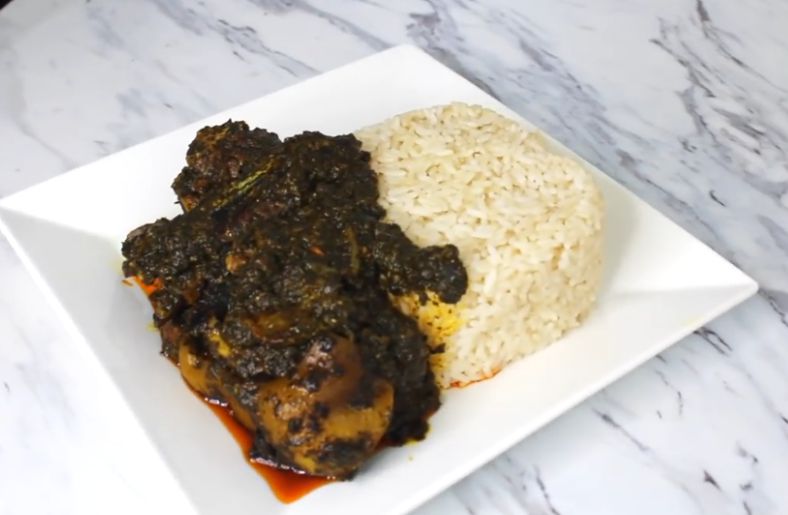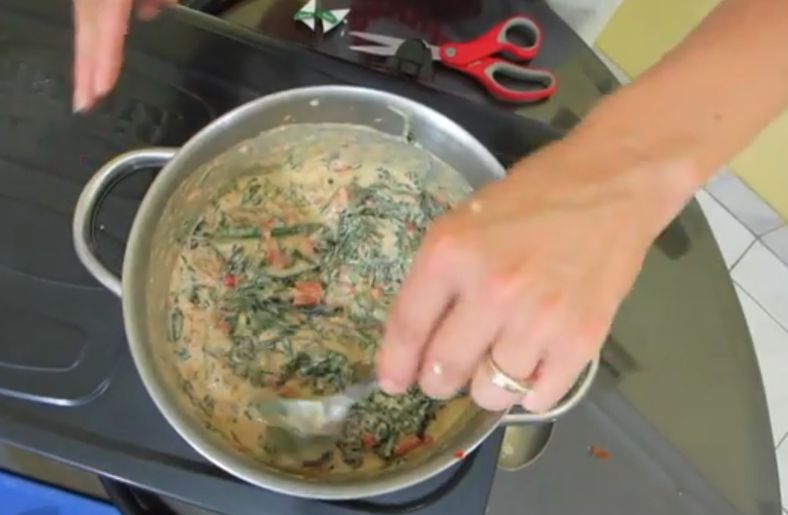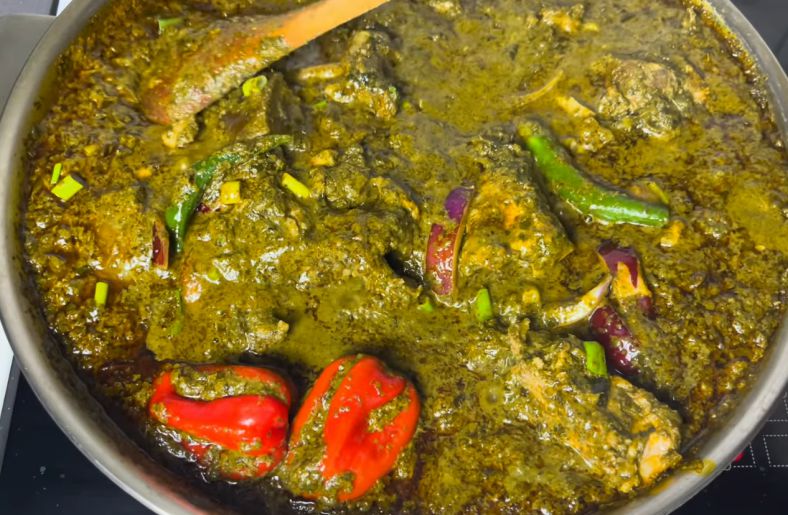Bring bold flavors to your table with these delicious cassava leaves recipes, from hearty African stews to spicy Asian stir-fries. These dishes turn humble greens into irresistible meals.
Cassava leaves show up in kitchens across Africa and Asia, simmered in rich broths, paired with bold spices, or stir-fried with fragrant ingredients.
If you’ve already read about what cassava leaves are and why they matter, it’s time to get practical.
This post focuses only on what you can cook: real recipes, real techniques, and flavors that speak for themselves.
You’ll find both traditional dishes like Congolese pondu and modern takes like cassava leaf pesto.
Each cassava leaves recipe starts with proper preparation to remove toxins and bring out the best flavor.
Whether you’re using fresh, frozen, or dried leaves, you’ll find a method that fits.
Get ready to cook dishes that mean something in the cultures they come from, and maybe in your kitchen too.
New to cassava recipes? Check out this comprehensive guide.
Table of Contents
- The Cassava Leaves African Food
- Important Preparation Tips Before Cooking
- Chopped or Ground Cassava Leaves
- Popular Cassava Leaves Recipes Around the World
- Modern Takes on Cassava Leaves Dishes
- Tips for Cooking with Cassava Leaves
- Frequently Asked Questions
- Conclusion
The Cassava Leaves African Food
When you think of African food, cassava leaves often come to mind. In countries like Sierra Leone, Liberia, and Congo, they’re cooked into flavorful stews with meat, fish, or groundnuts.
You’ll usually find them simmered with onions, chili, and seasoning cubes, then paired with rice or fufu.
The flavor is bold and earthy, and the texture softens when well-cooked.
If you’re new to African cooking, starting with cassava leaves gives you a real feel of home-style meals.
You don’t need much, just a pot, some oil, and the right spices. Cook slowly, stir often, and let the taste build.
Cassava leaves are a go-to in many homes and are loved for their depth and simplicity.
Important Preparation Tips Before Cooking
Get the most out of cassava leaves by starting with proper prep: this ensures safety and better taste in every dish you make.
Clean Fresh Cassava Leaves First
Start by rinsing the leaves under running water to remove dirt, grit, or bugs. You don’t want anything that could spoil your dish later.
After washing, chop the leaves into smaller pieces for easier handling.
Boil the leaves in a large pot of water for 20 to 30 minutes.
This step removes natural toxins like cyanogenic glycosides.
You can toss in a few cloves of garlic or onion to add aroma during boiling.
Boil Frozen Cassava Leaves After Thawing
If you bought your cassava leaves frozen, make sure to thaw them first.
Thawing helps cook them evenly and prevents clumps. Once they’re soft, boil them for 10 to 15 minutes to detoxify.
You don’t need a full re-cook, just enough to make them safe and ready to blend into sauces, stews, or stir-fries.
Always check the texture before moving to the next step in your recipe.
Soak Dried Cassava Leaves Before Boiling
When working with dried cassava leaves, soak them in warm water for about 30 minutes. This helps rehydrate the leaves and soften the fibers.
Once soaked, boil them for 20 to 25 minutes. Dried leaves are handy if fresh or frozen isn’t available, but you’ll need to work a bit more to bring them back to life.
Don’t skip boiling after soaking; this is how you get rid of the toxins safely.
Use the Right Tools for Texture and Taste
Traditionally, a mortar and pestle are used to pound cassava leaves until they’re soft and smooth.
This breaks down the fibers and releases more flavor. If you don’t have that, a blender or food processor works well too.
The goal is to achieve a paste-like consistency that blends easily into your cooking.
Don’t over-blend, it should still have some texture for a better eating experience.
Related Posts
- How to Cook Cassava Leaves
- Health Benefits of Cassava Leaves
- Cassava Leaves Nutritional Facts
- 17 Science-Backed Cassava Leaves Benefits
- How to Make Cassava Leaves Soup
- How is Cassava Leaf Stew Made?
- Fufu and Cassava Leaves Dish
- Rice and Cassava Leaves Pairing
Chopped or Ground Cassava Leaves
Chopped Cassava Leaves
Chopped cassava leaves are commonly used in traditional African stews and soups.
The leaves are cut into small pieces, which helps them cook evenly while still keeping a bit of texture.
You can use them fresh or frozen, depending on what’s available.
Chopped leaves work well in dishes like cassava leaf stew or palaver sauce, where they blend with spices, onions, and proteins like meat or fish.
If you prefer a leafy texture in your meals, chopped cassava leaves are a great choice.
Just be sure to cook them thoroughly to remove natural toxins and bring out their full flavor.
Ground Cassava Leaves
Ground cassava leaves offer a thicker, smoother consistency than chopped ones.
They are usually pounded or blended into a fine paste before cooking.
This form is common in dishes like saka saka and pondu, where the ground leaves absorb rich flavors from added ingredients like smoked fish, peanuts, or palm oil.
Ground leaves create a hearty, sauce-like dish that clings well to rice, yam, or cassava.
This method also reduces cooking time slightly and makes the dish creamier. Always boil the leaves first to ensure safety.
If you like deeper, more concentrated flavors in your greens, ground cassava leaves are ideal.
Popular Cassava Leaves Recipes Around the World
This section highlights popular recipes from different regions, demonstrating the cultural diversity in the use of cassava leaves.
Congolese Pondu (Saka Saka): Central Africa

One of the most popular cassava leaves recipes is the Congo pondu. Pondu, also called Saka Saka, is a rich cassava leaf stew from the Democratic Republic of Congo.
You start by boiling washed cassava leaves until they’re soft and safe to eat. In a separate pot, heat palm oil and cook chopped onions until fragrant.
Add ground peanuts for depth and stir in the boiled leaves. To make it heartier, add smoked fish, beef, or chicken.
Let everything simmer together so the flavors can blend well.
This dish is bold, earthy, and deeply satisfying. Pondu is usually served with warm rice, boiled cassava, or plantains.
It’s the kind of meal that brings comfort and fills the home with an inviting aroma.
If you’re trying cassava leaves for the first time, this dish is a great place to begin.
The ingredients are simple, but the result is deeply flavorful. More on how to cook pondu here.
Palaver Sauce with Cassava Leaves: West Africa

Another of the cassava leaves recipes is the palava sauce. Palaver sauce is a bold West African dish made popular in Sierra Leone and Liberia.
It brings together cassava leaves, tomatoes, onions, hot peppers, and fish like mackerel.
First, boil the cassava leaves until they’re tender and safe to eat.
In another pot, sauté chopped onions, tomatoes, and peppers until the sauce thickens.
Add the fish and let it soak in the flavor. Then mix in the cooked leaves and simmer everything together.
The result is a rich, spicy sauce packed with smoky, savory taste. Some versions include palm oil or peanut paste for added depth.
Palaver sauce is usually served with steamed rice or fufu, making it a satisfying main dish.
If you enjoy dishes with layered flavor and heat, this recipe is a must-try. It’s comforting, filling, and deeply rooted in West African cooking traditions.
See a dedicated post on how to cook palaver sauce.
Cassava Leaf Curry: Madagascar Style

Cassava leaf curry from Madagascar blends African ingredients with Indian-inspired spices for a warming, aromatic dish.
Start by sautéing chopped onions and garlic in oil until fragrant. Add turmeric, cumin, and coriander to build a rich base.
Stir in chopped cassava leaves, then pour in coconut milk for a creamy finish.
If you prefer a lighter version, vegetable broth works just as well.
Let the curry simmer gently until the leaves are soft and the flavors combine.
The result is a smooth, comforting curry with a deep herbal taste and a hint of spice.
This dish is naturally gluten-free and can easily be made vegan. Serve it hot with fluffy rice, flatbread, or cassava flour dumplings.
It’s a simple recipe, but the flavor is layered and satisfying, perfect for a weeknight dinner or a special plant-based meal.
Indonesian Daun Singkong Tumis: Southeast Asia

Daun Singkong Tumis is a quick stir-fried cassava leaf dish from Indonesia that’s packed with bold, spicy flavors.
Begin by heating oil in a pan and sautéing minced garlic with sliced red chili until the aroma fills your kitchen.
Toss in chopped cassava leaves along with a handful of anchovies or dried fish for a salty punch.
Cook just until the leaves are tender but still green and fresh.
The heat from the chili and the umami from the anchovies create a simple yet punchy flavor combo.
It’s commonly served with steamed rice and grilled meats, but you can enjoy it on its own as well.
This dish brings the taste of Southeast Asia to your plate with minimal ingredients and cooking time. It’s fast, flavorful, and ideal for spicing up everyday meals.
Related: How to Handle Frozen Cassava Leaves
Modern Takes on Cassava Leaves Dishes
Cassava leaves aren’t just traditional anymore. They’re now showing up in fresh, exciting ways that suit your modern lifestyle.
Here are three creative dishes you can enjoy and benefit from:
Cassava Leaves Smoothie: A Green Boost That Tastes Good
You might not think of cassava leaves when making a smoothie, but when they’re fully detoxified and blended right, they add a fresh, earthy touch to your drink.
Toss in banana, mango, and your choice of yogurt or plant-based milk.
What you get is a creamy, vitamin-rich smoothie packed with fiber, iron, and antioxidants.
It’s a great option when you want something light but nourishing, especially post-workout or first thing in the morning.
Cassava Leaf Pesto: A Bold Sauce for Bread and Pasta
Swap basil for cassava leaves and you’ve got a pesto with attitude.
Once the leaves are detoxified and finely chopped, blend them with garlic, olive oil, and nuts like pine nuts or walnuts.
This green sauce pairs well with pasta, roasted veggies, or even as a spread on crusty bread.
The taste is rich and deep, adding an earthy punch that turns any simple meal into something new without overwhelming your taste buds.
Cassava Leaf Soup: A Warm Bowl That Feeds and Heals
Think of this soup as comfort food with a healthy kick. Simmer cassava leaves in bone broth, then add chopped vegetables, garlic, and spices of your choice.
The result is a rich, hearty soup that delivers nutrients like protein, calcium, and vitamin C in one bowl.
It’s filling without being heavy and works for both traditional food lovers and clean eaters who want something wholesome and flavorful.
More on cassava leaf soup here.
Tips for Cooking with Cassava Leaves
Cooking cassava leaves isn’t complicated, but knowing how to handle them makes all the difference.
Here are smart ways to get the most flavor and safety out of every batch:
Boil First: It Makes the Leaves Safe and Tasty
Cassava leaves contain natural compounds that can be bitter or even harmful if eaten raw.
Before using them in any dish, boil the leaves in plain water for about 10 to 15 minutes.
This step helps remove toxins and softens the leaves, making them easier to chew and more pleasant to eat.
Once boiled, discard the water, and you’re ready to move on to your main recipe.
Store the Right Way: Fresh or Frozen, You Have Options
If you’re not cooking the leaves right away, keep them fresh in the fridge for up to a week by storing them in a plastic bag.
For longer storage, blanch them quickly, cool them in ice water, drain, and then seal in freezer bags or containers.
Frozen cassava leaves can last up to six months without losing their flavor or nutrients.
When you’re ready to use them, just make sure they’re fully cooked before serving.
Boost Flavor: Use Oils, Spices, and Fresh Herbs
Cassava leaves have an earthy taste that pairs well with bold flavors.
Cook them with oils like coconut or olive oil for richness.
Add chopped garlic, ginger, or chili for extra depth. Fresh herbs like parsley or cilantro can also brighten the dish and give it a more balanced finish.
These additions don’t just improve taste, they make your meals more inviting and satisfying.
Frequently Asked Questions
What do cassava leaves taste like?
Cassava leaves have a mild, earthy, and slightly bitter flavor. When cooked with spices, oil, and aromatics, they absorb rich flavors beautifully.
Are cassava leaves safe to eat?
Yes, after proper boiling. Cassava leaves contain natural toxins that must be removed by boiling before eating, whether you’re using fresh, frozen, or dried.
Can I use cassava leaves in non-traditional recipes?
Absolutely. Once detoxified, cassava leaves work well in modern recipes like pesto, smoothies, and soups. They add flavor, fiber, and nutrients to creative dishes.
How do I store leftover cassava leaf dishes?
Cool leftovers completely, then refrigerate in an airtight container for up to 3 days. You can also freeze them for longer storage without losing flavor.
Conclusion
Cassava leaves are more than just a leafy green; they’re a cultural staple transformed through bold recipes, vibrant spices, and time-honored techniques.
From African stews like Pondu to Southeast Asian stir-fries, these dishes celebrate the flavors and heritage of the regions they come from.
Whether you’re new to cassava leaves or already familiar, the key lies in proper preparation: boil to detoxify, blend for texture, and pair with powerful ingredients.
Try modern twists like cassava leaf pesto or smoothies to make them part of your everyday meals.
By honoring their roots and exploring new ways to cook them, you’re not just making food, you’re connecting to stories, traditions, and flavor like never before.
References

Chimeremeze Emeh is a writer and researcher passionate about Africa’s most transformative root crop—cassava. Through his work at cassavavaluechain.com, he explores the entire cassava industry, from cultivation and processing to its diverse applications in food, health, and industrial use.
He also writes for palmoilpalm.com, where he shares his extensive experience and deep-rooted knowledge of palm oil, covering red palm oil, palm kernel oil, and refined products. His work there reflects his lifelong connection to agriculture and his commitment to promoting sustainable value chains in Africa.
Driven by curiosity and purpose, Chimeremeze aims to shed light on how cassava continues to empower communities, strengthen food systems, and link traditional farming wisdom with modern innovation.

